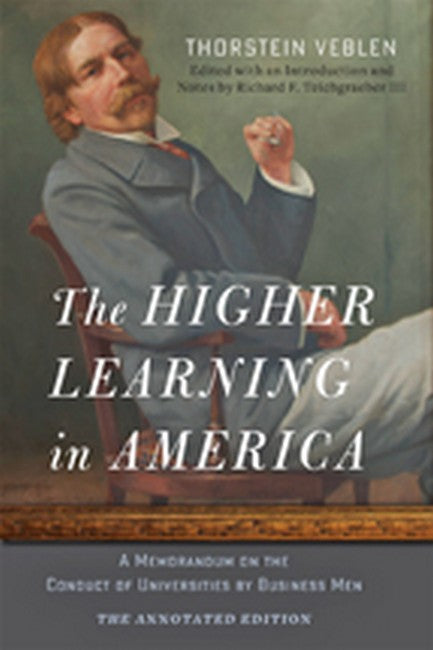List of Illustrations
Editor's Note
Suggested Readings
Thorstein Veblen Chronology
Introduction
Veblen in Historical Context
The Composition of The Higher Learning in America
The Professors' Literature of Protest
Veblen and the Professors' Literature of Protest
What Set Veblen Apart? Why Read Veblen Today?
The Higher Learning in America
Preface
I. Introductory
II. The Governing Boards
III. The Academic Administration and Policy
IV. Academic Prestige and the Material Equipment
V. The Academic Personnel
VI. The Portion of the Scientist
VII. Vocational Training
VIII. Summary and Trial Balance
Index
Since its publication in 1918, Thorstein Veblen's The Higher Learning in America has remained a text that every serious student of the American university must confront. Intellectual historian Richard Teichgraeber brings us the first scholarly edition of Veblen's classic, thoroughly edited, annotated, and indexed. An extensive introduction discusses the book's composition and publishing history, Veblen's debts to earlier critics of the American university, and the place ofThe Higher Learning in America in current debates about the American university.Veblen's insights into the American university system at the outset of the twentieth century are as provocative today as they were when first published. Insisting that institutions of higher learning should be dedicated solely to the disinterested pursuit of knowledge, he urged American universities to abandon commitments to extraneous pursuits such as athletics, community service, and vocational education. He also believed that the corporate model of governance-with university boards of trustees dominated by well-to-do businessmen and university presidents who functioned essentially as businessmen in academic dress-mandated unsavoury techniques of salesmanship and self-promotion that threatened to reduce institutions of higher learning to the status of competitive business enterprises.With a detailed chronology, suggested readings, and comprehensive notes identifying events, individuals, and institutions to which Veblen alludes, this volume is sure to become the standard teaching text for Veblen's classic work and an invaluable resource for students of both the history and the current workings of the American university.

